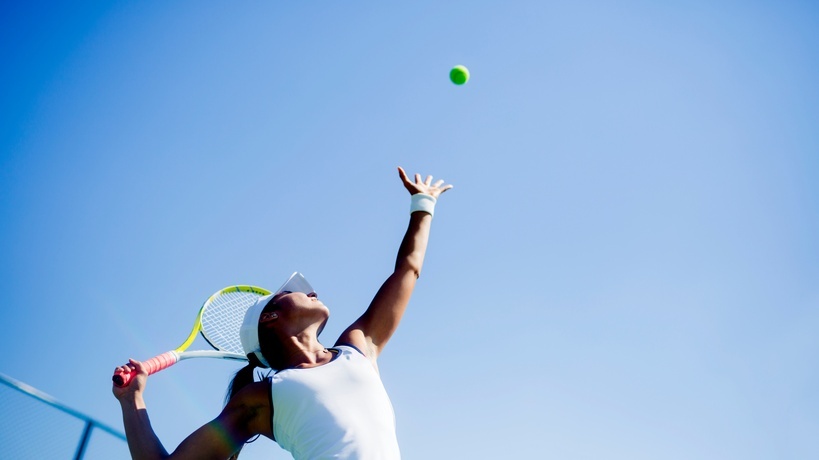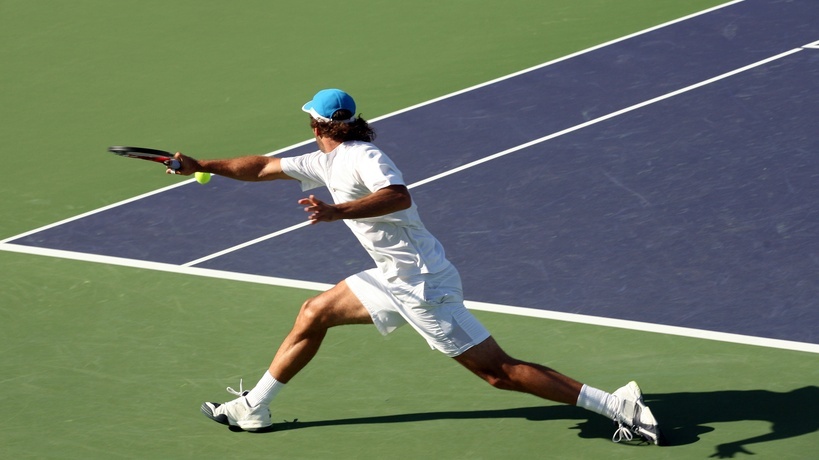Whether you're stepping onto the court for the first time or you've been playing for years, mastering fundamental tennis strokes makes the difference between good and great gameplay. Each stroke serves a specific purpose and requires proper technique to execute effectively.
Understanding these essential movements will improve your game. You'll gain confidence during matches and develop the foundation needed for advanced techniques. Let's explore the core strokes that form the backbone of successful tennis play.
The Forehand: Your Power Shot
The forehand is typically a player's strongest and most natural stroke. You'll use this shot frequently during rallies, making it essential to develop proper form from the beginning.
Start with your feet shoulder-width apart and your non-dominant hand supporting the racquet throat. As the ball approaches, turn your shoulders and step forward with your opposite foot. The key lies in transferring your weight smoothly from your back foot to your front foot as you swing through the ball.
The Backhand: Building Consistency
Many players struggle with the backhand initially, but it becomes a reliable weapon with practice. You can choose between a one-handed or two-handed approach, though beginners often find the two-handed version more stable.
For a two-handed backhand, place your dominant hand at the bottom of the grip and your non-dominant hand above it. Keep your elbows close to your body and focus on a compact swing. The stroke should feel controlled, rather than powerful at first.
The Serve: Starting Strong

Every point begins with a serve, making this stroke crucial for competitive success. A well-executed serve puts immediate pressure on your opponent and sets the tone for the entire point.
Toss the ball consistently to the same spot every time—slightly forward and to the right of your front foot (for right-handed players). Your serving motion should flow like throwing a ball overhand, with your racquet head accelerating through contact. Practice your toss separately until it becomes automatic.
The Volley: Quick Court Coverage
Volleys are short, punchy shots you play before the ball bounces. These strokes require quick reflexes and proper positioning at the net. You'll use volleys to finish points aggressively or when your opponent hits a short ball.
Keep your backswing minimal and focus on hitting the ball back with a firm wrist. Your feet should remain active, allowing you to move quickly to either side. The volley is about placement and timing, rather than power.
The Overhead: Finishing Points
The overhead smash gives you the opportunity to end points decisively when your opponent hits a high, weak shot. This attacking stroke requires good timing and positioning under the ball.
Position yourself so the ball falls slightly in front of your hitting shoulder. Use a similar motion to your serve, but focus on hitting down into the court. Keep your eye on the ball throughout the entire motion and follow through completely.
The Drop Shot: Strategic Placement
A well-timed drop shot can catch opponents off guard, especially those who prefer staying at the baseline. This finesse shot requires touch and precise timing to execute successfully.
Use a shortened backswing and gentle forward motion, almost like you're catching the ball with your strings. The goal is to make the ball barely clear the net and die quickly on your opponent's side.
Developing Your Stroke Technique

The different types of strokes every tennis player should master require consistent practice and proper court conditions. Start by practicing each stroke individually, before combining them in rally situations. Focus on one technique element at a time, rather than trying to perfect everything simultaneously.
Record yourself hitting or ask a coach to observe your form. Small adjustments in grip, stance, or follow-through can dramatically improve your results. Many players benefit from hitting against a wall or using a ball machine to develop muscle memory.
Court Maintenance for Better Practice
Proper court conditions contribute significantly to stroke development. Clean, well-maintained courts provide consistent ball bounces that help you develop timing and rhythm. When courts have debris or standing water, your practice sessions become less effective.
Professional facilities invest in quality tennis court maintenance equipment to ensure optimal playing conditions year-round. Water removal systems, court sweepers, and cleaning tools keep surfaces in tournament-ready condition.
All Star Tennis Courts understands the importance of proper court maintenance for player development. We provide equipment and expertise that help facilities maintain consistent playing surfaces.
Common Stroke Development Mistakes
Many players rush through the fundamentals, leading to technical problems that become harder to fix later. Take time to establish proper grips for each stroke before focusing on power or spin. Poor grip choices limit your ability to hit certain shots effectively.
Another common error involves inadequate footwork preparation. Your feet should move first, positioning your body before the stroke begins. Players who rely only on their arms struggle with consistency and power generation.
Timing issues often stem from watching the ball incorrectly. Keep your head steady and track the ball from your opponent's racquet to your contact point. This visual discipline improves accuracy across all strokes.
Building Match Strategy
Once you develop reliable strokes, you can start building tactical awareness. Each stroke serves specific strategic purposes during points. Your forehand might be your go-to attacking shot, while your backhand provides steady consistency.
Learn to recognize court positions that favor certain strokes. Short balls call for aggressive approaches, while deep shots might require defensive responses. Understanding these patterns helps you choose the right stroke for each situation.
Practice transitioning between different strokes smoothly. Points rarely involve just one type of shot, so you need to move seamlessly from baseline rallies to net play or defensive situations.
Equipment Considerations for Stroke Development
Your racquet selection influences how easily you can execute different strokes. Beginners benefit from larger head sizes and lighter weights that provide more forgiveness on off-center hits. As your technique improves, you can consider equipment that offers more control and customization options.
String tension affects how the ball responds when you make contact. Lower tensions provide more power, but less control, while higher tensions offer precision at the expense of easy power generation. Experiment with different setups to find what complements your developing stroke technique.
Practice Drills for Stroke Improvement
Set up specific practice routines for each stroke type. Shadow swings without a ball help you focus purely on technique and muscle memory. Start each practice session with these movements before moving to live ball drills.
Use targets on the court to improve accuracy with each stroke. Cones or markers help you practice hitting to specific areas consistently. This approach simultaneously develops both technical skills and tactical awareness.
Partner drills allow you to practice strokes in more realistic situations. Have your practice partner feed balls to specific areas so you can work on particular stroke patterns. This controlled environment bridges the gap between solo practice and match play.
Taking Your Game to the Next Level
Mastering these essential tennis strokes takes time, dedication, and proper practice conditions. Focus on developing one stroke at a time while maintaining the techniques you've already learned. With consistent effort and the right environment, you'll see steady improvement in your overall game.
If you're struggling with any installation or setup challenges related to court equipment, give us a call for help. Our team at All Star Tennis Courts has the experience to guide you through any technical questions you might have.

